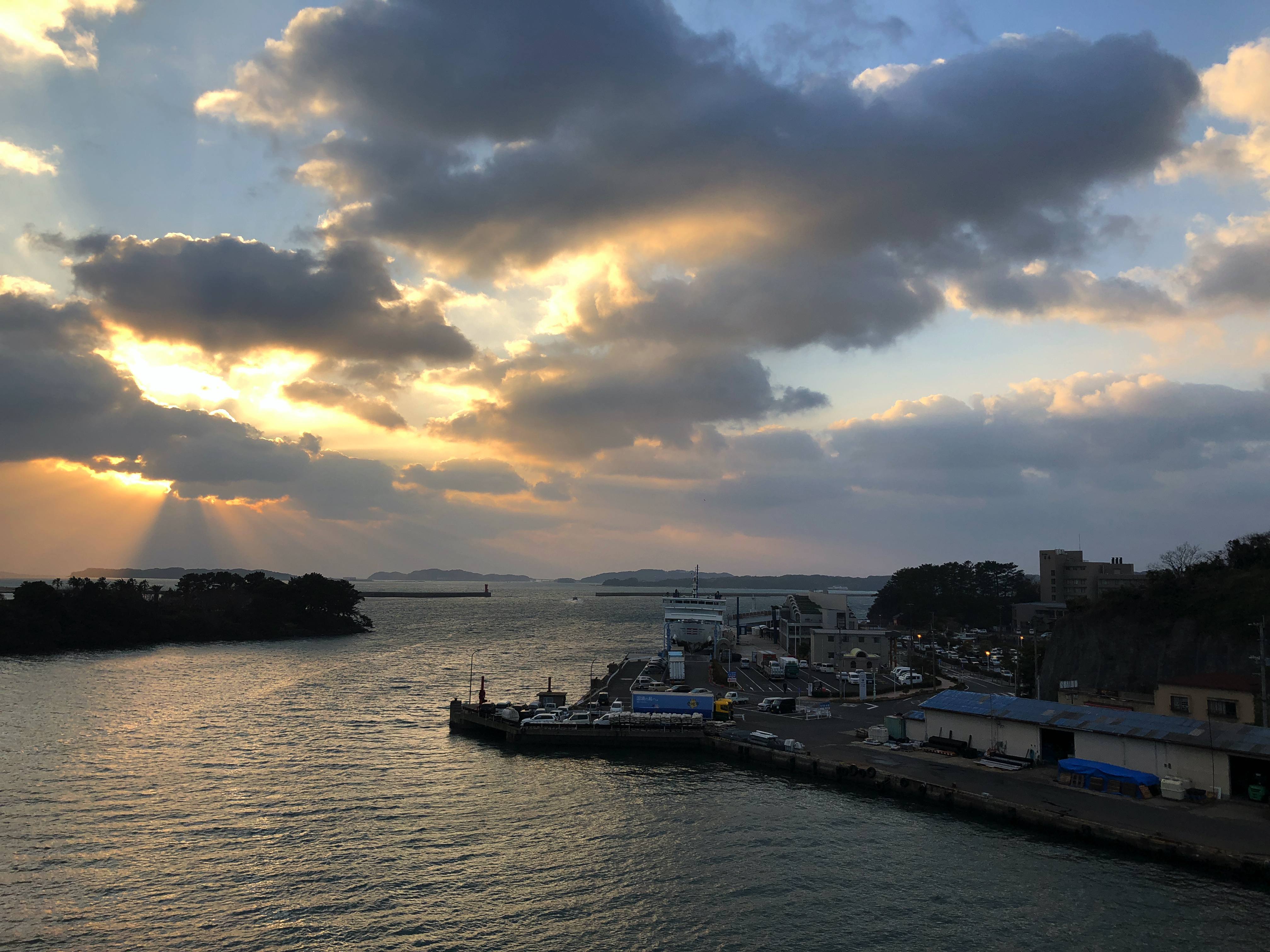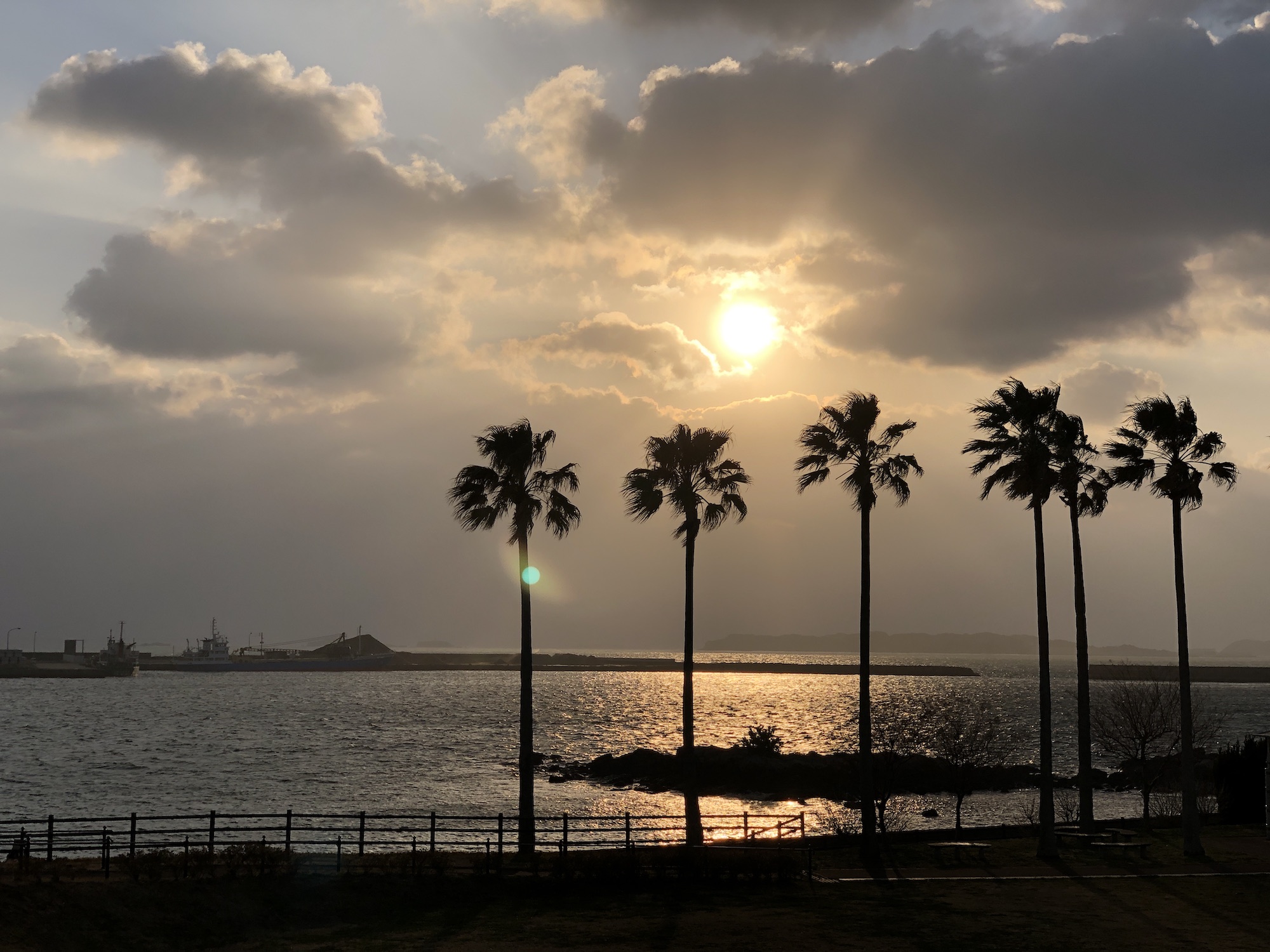That narrow corridor of water between Japan and continental Asia, the confluence of three seas — East China, Yellow, and the Sea of Japan — is called the Korea Strait. It is about 200km wide, and is bisected by the long and narrow Tsushima Island. From Tsushima, on a clear day, it is said one can see Korea across the Western Channel. In the opposite direction, across the Tsushima Strait, it is a mere 65km jaunt to Kyushu, one of the four major islands of Japan.
The Tsushima Straight bears a heavy historical significance for Japan. It is over Tsushima Strait that a metaphorical “bridge” stretched from Japan to Continental Asia through the ages. The Jōmon Peoples crossed the Straight 14,000 years ago, one of the first settler groups to the Japanese archipelago. Thousands of years later Buddhism and all sorts of Chinese culture crossed over. The straight was plied by wakō pirates for centuries, and the Mongols crossed it a couple times in their attempts to invade. Toyotomi Hideyoshi, the “great unifier” of Japan struck out across the Strait on his failed attempts to invade Korea. At the turn of the 20th century, the Straight was the site of a decisive battle between Japan and Russia — the first time an Asian power defeated a Western power in the modern era.
There has been more than just pirate ships, Mongols, and gunboats floating in these waters. In legendary times there was a magical island that roamed around called Iki Island (or Ikijima). The gods decided that was inconvenient and pinned the island within eight pillars (one in the shape of a giant monkey).
In the final foray of our New Year’s trip around Japan, we headed for the “Lucky Island” of Ikijima.
In the early morning, after another spectacular sunrise we left Ise Jingū on a series of trains to Kyoto station, where we changed to the Shinkansen — the bullet train — and sped westward at 300km/hr, passing by the beautiful castle at Himeji, historical Kurashiki, and of course through infamous Hiroshima on the way to Japan’s southern major island of Kyushu. Alighting in Fukuoka, I quickly had to remove my winter jacket for it was 20 degrees celsius! Very warm for January 7th, even by Fukuoka’s standards.

Heading to the Fukuoka ferry terminal we boarded a “jetfoil”, a variant of a hydrofoil that uses a waterjet to propel the ship. As we exited the port area and passed through anchorage, the ship picked up speed and the hull raised out of the water. Up on its skis, the ship is out of water and hardly perturbed by waves. We sped along at 80 km/h, a much smoother ride than a boat. The jetfoil takes just an hour to get to Iki.

Our jetfoil was built in 1991, and merely based on the interior design I felt like I was time-transported to the heyday of Japan’s Bubble Era, the time when everyone was flush with cash and could spend it on crazy things like jet-powered boats. Three “Lost Decades” later, as Japan has suffered deflation, this provincial boat to a tiny depopulated is unlikely to be replaced… I thought as I sat down. I didn’t realize it was a clue as to what we would find on Ikijima itself.
The weather was overcast and very windy. Our ship was redirected to the more protected main port of Go-no-ura at the south of the island. We were lucky that our jetfoil wasn’t cancelled entirely: when storms whip up the waves too high, the skis on the jetfoil cannot handle it. People then must resort to the ferry, taking about twice the time (and half the cost). The ferry is much larger and can handle rougher seas.

Ikijima takes about 1 hour to drive around. It used to be its own country, then its own province, but now its three main towns make up a single municipality. The entire island is home to some 26,000 people, but at one time it used to be 50,000. Even though it is next to Fukuoka, it is actually part of Nagasaki Prefecture, along with most of the littoral islands on this side of Kyushu. Fishing and farming make up the main part of the economy. Ikijima grows its own rice, raises its own cattle (Iki Beef is the progenitor of the much more famous Kobe Beef), and even generates its own power. It is a self-sustaining island.
Tourism is its next biggest industry. The island is a short jaunt from Fukuoka and has 2 of the top 100 beaches in Japan. It is a nice getaway, and camping is popular. The Ikikoku Museum, which has many Jōmon pieces on display is top notch. There are a number of ancient burial sites and archeological digs. Iki has too many sights to sum up here, but besides the local attractions, Ikijima is also a destination spot for spiritual people. This tiny little island has over 1200 Shinto shrines. It has a number of “power spots” that attract people from all over the country.
[googlemaps https://www.google.com/maps/d/embed?mid=1OM7pKQZ9UR2iu8OOugHkuECqpoU&hl=enUS&w=740&h=480]Map of many of Ikijima’s tourist spots. (Source: Iki Tourist Guide)
We travelled to two of the towns, and stayed in a local inn and ate in some local restaurants. I suppose whenever you visit anywhere very rural it can feel like you have stepped back in time. This place is very far removed from the metropolises of Kanto and Kansai. So it is a little surprising to hear that Iki is on the cutting edge in terms of climate change and agricultural technology.
In September of 2019 Ikijima became the first community in Japan to declare a Climate Crisis (get a quick breakdown from this Japan Times podcast or read this feature article). As luck would have it, the people we were travelling with were able to get us some face time with the mayor of Iki, Hirokazu Shirakawa (69), to discuss these issues. It was day 2 of our visit, an extremely windy day, which caused the cancellation of the jetfoil to the island from Fukuoka Ferry Terminal. A party of Dutch researchers had been scheduled to visit the mayor to discuss wind generation. (If you read Mayor Shirakawa’s blog you will see he does a lot of international diplomacy, trying to bring the best to Iki). Because the Dutch were delayed, the mayor had an open slot to talk with us.
Mayor Shirakawa talked with us about how, as an island, Ikijima is a microcosm of what will happen during the climate crisis. He described how the rising sea temperatures have affected the fishing lifecycle (tropical fish are now making their way north to these waters) and how that impacted the local community; about “smart” agriculture initiatives; and his efforts to educate the public about the UN Sustainable Development Goals (we saw many placards advertising the 17 SDGs on the island).
Ikijima has become a leader for climate action in Japan. There are many groups fighting for change (Fridays for Future being one prominent example… see this JT podcast on the youth climate movement in Japan), but Iki was the first government body in Japan to stand up and declare a crisis. Since last September a few other cities and prefectures that have followed suit. While the federal government dithers, we must rely on local communities to push this agenda.



